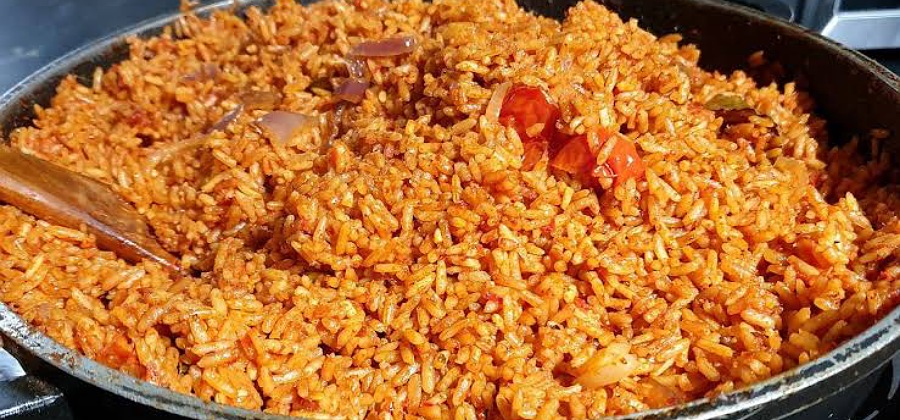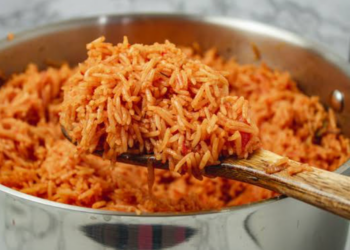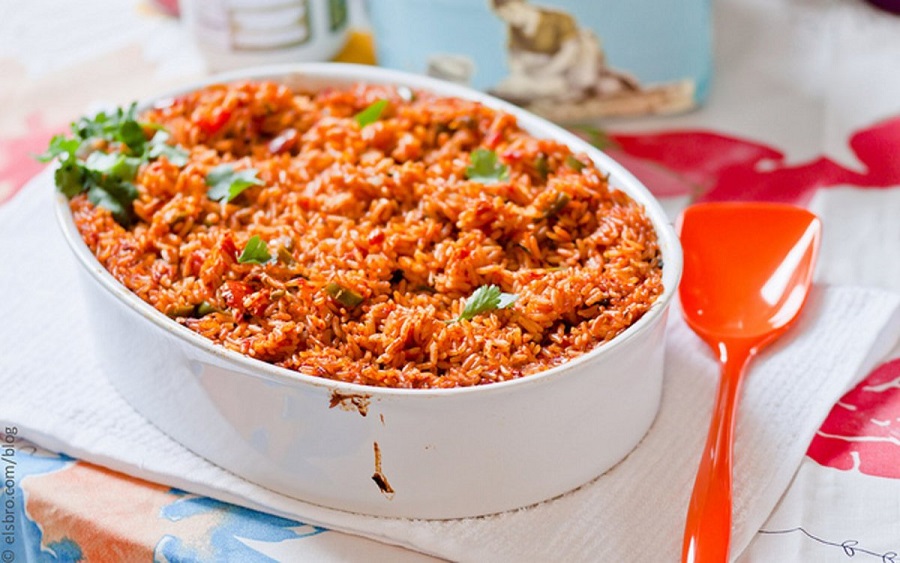The cost of making a pot of Jollof rice for a family of five went up from N8007.50 in Q3 2021 to N8,595 at the end of Q1 2022, a 7.3% increase.
This was disclosed in the quarterly SBM Jollof index report for Q1 2022, published by SBM Intelligence.
The report also added that insecurity has also plagued the country to disturbing degrees, citing that this has affected food distribution as some food supply routes are considered unsafe.
Key highlights of the report
“The average cost of making a pot of Jollof rice for a family of five went up from N8007.50 in Q3 2021 to N8595 at the end of Q1 2022, a 7.3% increase,” the report said.
The report stated that price surges are now a common phenomenon in all the markets as the approach of running to outskirt markets in a bid to save costs is no longer tenable.
- “This showed particularly in Abuja. It will cost the most to make a pot of jollof rice in Wuse II at N10,900 while Bayside Mbakpa in Calabar accounts for the lowest cost of making a pot of Jollof rice at N6,840,” the report revealed.
- The report also revealed that traders now call dealers on a daily basis to confirm if there is a price change before they begin the day’s sales because they stand a risk of not being able to replace stocks, as profits are very marginal due to the high cost of goods.
- Customers also complained about their inability to add protein to their meals. A respondent stated, “Beef, chicken, and fish have become so costly these days. I am not even talking about turkey. I removed that one from my menu a long time ago, and now that everybody wants to add egg, it has gone up too. It is now about N80 or N90, depending on whether you buy the small or big one.”
- As food prices rise, threats of malnutrition may also be on the rise as Nigerians also cut down on their protein intake, related to the prices of eggs rising by 45.% in March 2022, compared to the same period in the previous year.
- A meat seller described he noticed recently that people are abandoning beef for cheaper parts such as intestines, and other innards in a bid to save cost. Additionally, more customers ask that their meats be sliced into smaller pieces.
- The report said that in the North Central, both Nyanya and Wuse II markets experienced an increase in food prices between October and November, a decline in January and an upward trend in March. Nyanya market, being a market on the outskirts of Abuja had previously been costless than Wuse Market, however, the report revealed that the run to the outskirts does not hold much advantages as costs are roughly the same.
- “In these North Central markets, the prices of turkey, beef, and onions increased. The price increase in February and March can be attributed to the fuel scarcity which increased the cost of 8 transportation of goods–some drivers had to spend the night at filling stations to be able to get fuel for their 9 vehicles and others had to buy from black market vendors at higher rates.”
- Other factors that impact food prices apart from fuel scarcity, were blackouts, which increased food storage for protein, and insecurity, which they say also affects the transportation of food from nearby northern states into the Federal Capital, which is also affecting major spicy ingredients used in making a pot of rice, especially onions.
- The report also added that the Russian invasion of Ukraine is also impacting food prices in Nigeria, citing that the war has led to a global surge in fertiliser prices as shipments from the black sea region have been reduced.
- “Hence, food prices are likely to take an upward trend in the coming months. Already, the cost of a 50kg bag of NPK increased from N8,000 in the previous year to about N17,000 presently.
- “A bag of Urea fertiliser now costs N17,000, up from N6,000 last year, thus increasing the cost of food production. While the commissioning of the three million ton fertiliser facility is expected to improve the availability of fertiliser, it may not improve the cost,” it added.
Nairametrics reported last week that food inflation rose to 17.2% in the review month, an uptick compared to the 17.11% recorded in the preceding month. This rise in the food index was caused by increases in the prices of bread and cereals, food product, Potatoes, yam and other tubers, fish, meat, oils and fats.












.gif)







I agree with this may god bless this program
Forget jallof rice , eat bean because it is more nutritious, laden with protein.